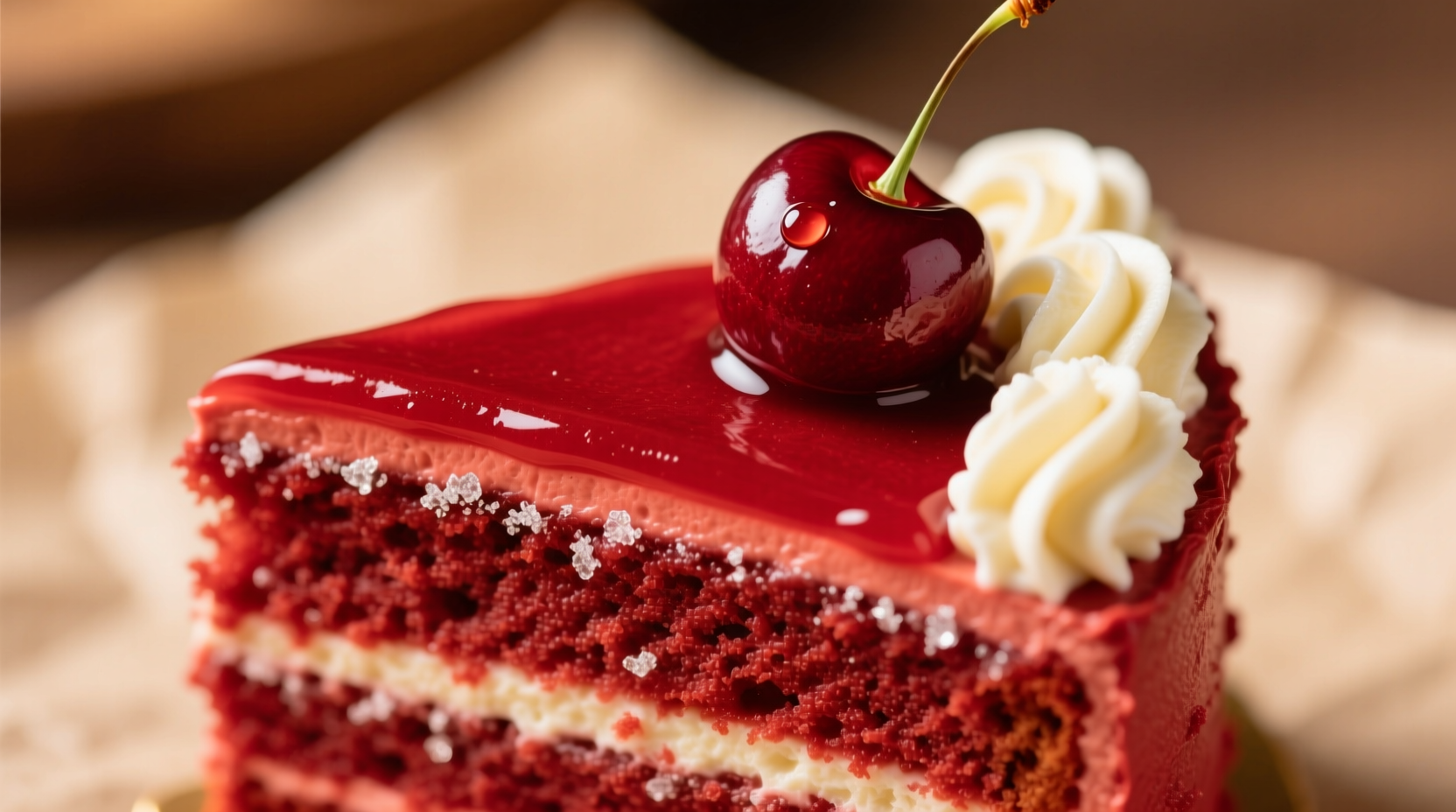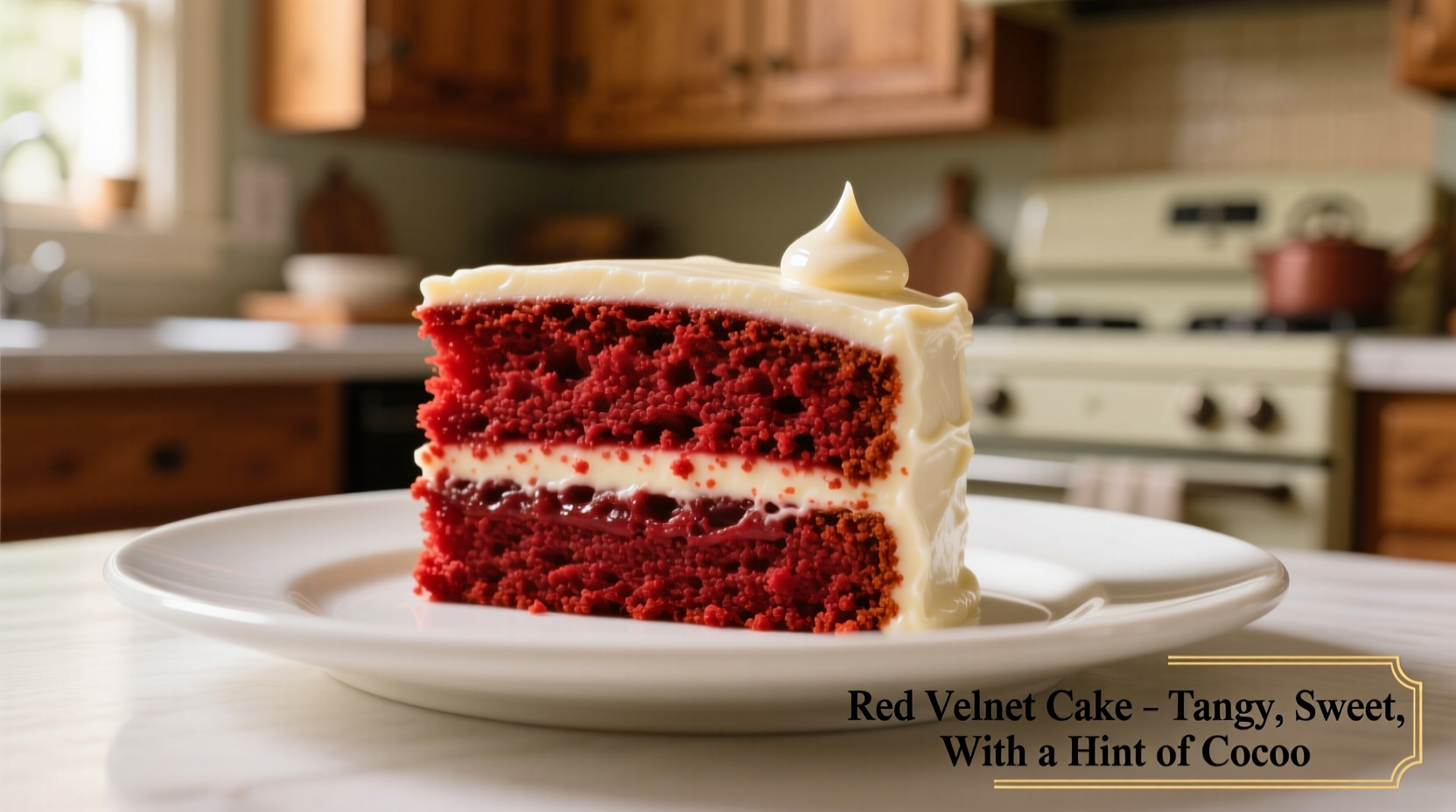Confused about what actually gives red velvet cake its signature taste? You're not alone. Despite its popularity, there's widespread misunderstanding about this iconic dessert's true flavor profile. Forget the myth that red velvet is just chocolate cake with food coloring—the reality is far more interesting and scientifically nuanced.
The Core Flavor Components Explained
Red velvet cake delivers a sophisticated flavor experience that many commercial versions fail to capture. The authentic taste comprises three essential elements working in harmony:
- Subtle cocoa presence - Not a dominant chocolate flavor, but a delicate hint that provides depth without overwhelming sweetness
- Tangy acidity - From buttermilk and vinegar reacting with the cocoa, creating that signature slight sour note
- Vanilla foundation - The underlying sweetness that balances the tanginess
This precise balance creates what food scientists call a flavor matrix—where no single component dominates, but together they produce something greater than the sum of their parts. The red food coloring, contrary to popular belief, contributes zero flavor; it's purely visual.
Debunking Common Flavor Myths
Let's address the most persistent misconceptions about red velvet cake flavor:
| Common Myth | Reality |
|---|---|
| "Red velvet is just chocolate cake with red dye" | Traditional red velvet uses minimal cocoa (1-2 tablespoons) compared to chocolate cake (3/4+ cup), creating a completely different flavor profile |
| "There's a special 'red velvet flavor'" | No proprietary flavor exists—the distinctive taste comes from specific ingredient ratios and chemical reactions |
| "The red color affects the taste" | Modern food coloring is flavorless; any perceived flavor difference comes from psychological color-taste association |
The Science Behind the Signature Taste
The distinctive flavor of authentic red velvet cake stems from specific chemical reactions between ingredients. When natural (non-alkalized) cocoa powder interacts with acidic components like buttermilk and vinegar, it creates:
- A mild anthocyanin reaction that historically produced a reddish hue (before artificial coloring)
- Enhanced flavor compounds that create the characteristic tangy-sweet profile
- Optimal crumb structure that affects mouthfeel and flavor release
According to food science research published in the Journal of Food Science, this acid-cocoa interaction produces unique flavor compounds not present in standard chocolate cakes. The buttermilk's lactic acid and vinegar's acetic acid work synergistically with cocoa's polyphenols to create red velvet's signature taste profile.

Historical Evolution of the Flavor Profile
Understanding red velvet's flavor requires examining its culinary journey:
- Early 1900s: Natural cocoa reaction with acidic ingredients created a subtle reddish tint and distinctive flavor
- 1930s-1940s: The Waldorf-Astoria recipe popularized the cake, emphasizing the delicate cocoa-acid balance
- Post-WWII: Artificial red dye became common, shifting focus from flavor to color
- Modern era: Commercial mixes often overemphasize chocolate flavor, distorting the authentic profile
This evolution explains why many people today misunderstand red velvet's true flavor. As noted by culinary historians at the Smithsonian National Museum of American History, "The shift from natural cocoa reactions to artificial coloring fundamentally changed consumer expectations about the cake's taste."
How to Identify Authentic Red Velvet Flavor
When evaluating red velvet cake quality, focus on these flavor indicators:
- Taste test: First impression should be slightly tangy, not predominantly chocolate
- Aftertaste: Clean finish with subtle cocoa notes, not heavy chocolate bitterness
- Balance: Cream cheese frosting should complement, not overwhelm, the cake's delicate flavor
- Mouthfeel: Tender crumb that releases flavor gradually, not dense or dry
Professional bakers use a simple test: authentic red velvet should maintain its distinctive flavor even without the red coloring. If you remove the dye and it still tastes uniquely "red velvet," you've achieved the proper flavor balance.
Creating Perfect Flavor Balance at Home
For home bakers seeking authentic red velvet flavor, follow these evidence-based guidelines:
- Use natural (non-Dutched) cocoa powder for proper acid reaction
- Maintain precise ratios: 1-2 tablespoons cocoa per 2 cups flour
- Don't skip the vinegar—it's crucial for flavor development, not just rising
- Use full-fat buttermilk for optimal tanginess and moisture
- Choose high-quality vanilla extract as the flavor foundation
Remember that temperature matters—baking at 350°F (175°C) allows proper Maillard reaction without burning the delicate crumb. Overbaking destroys the subtle flavor balance that defines authentic red velvet.
Why Flavor Authenticity Matters
Understanding red velvet's true flavor profile isn't just academic—it transforms your baking experience. When you grasp the science behind the tangy-sweet balance, you can troubleshoot issues, adapt recipes confidently, and appreciate this American classic beyond its Instagram-worthy appearance. The next time someone claims red velvet is "just chocolate cake with dye," you'll know the delicious truth.











 浙公网安备
33010002000092号
浙公网安备
33010002000092号 浙B2-20120091-4
浙B2-20120091-4